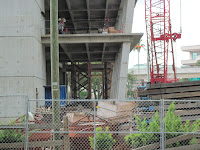Litigation, Arbitration and Mediation: Part VI

In mediation, the parties hire a professional mediator to facilitate a settlement. The mediator has no power or authority to make any decisions for the parties. All the mediator can do is to listen and ask questions regarding each party’s case to help the parties (and their lawyers) to see the strengths and weaknesses of each case. Often times this is the first time the parties tell them their case is not a “sure thing,” and that dose of reality can be a strong motivation to settle. Trenton H. Cotney Board Certified in Construction Law Trent Cotney, P.A. 1207 N Franklin St, Ste 222 Tampa, FL 33602 (813) 579-3278 www.trentcotney.com




















